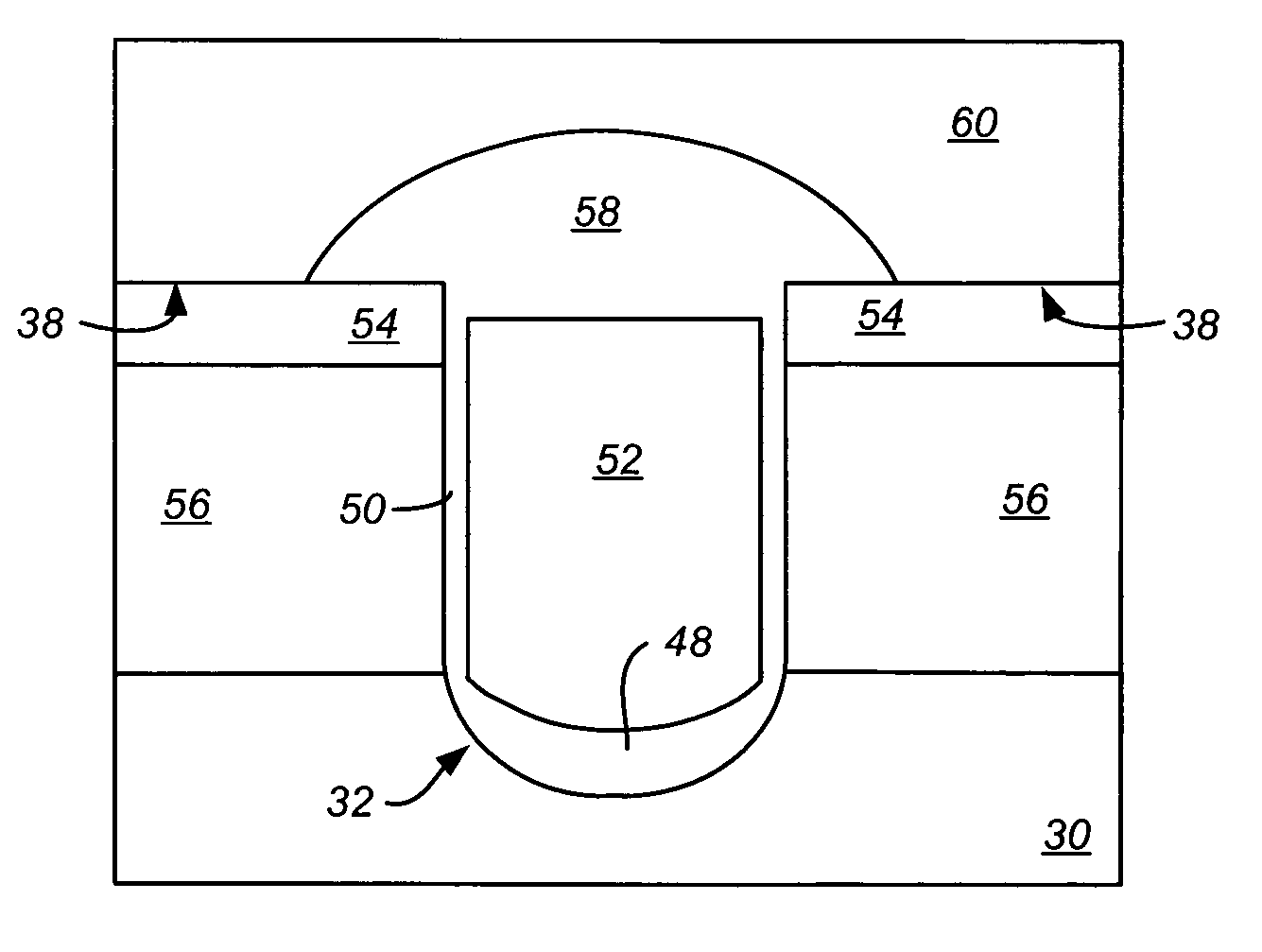Structure and method for forming laterally extending dielectric layer in a trench-gate FET
a dielectric layer and trench-gate technology, applied in the direction of semiconductor/solid-state device details, electrical apparatus, semiconductor devices, etc., can solve the problems of gate shortening and yield, gate polysilicon voiding, surface etching that is not substantial,
- Summary
- Abstract
- Description
- Claims
- Application Information
AI Technical Summary
Benefits of technology
Problems solved by technology
Method used
Image
Examples
Embodiment Construction
[0017] In accordance with an embodiment of the invention, a thick dielectric layer is formed along the bottom of a trench in a trench-gate FET while preventing formation of a similarly thick dielectric layer over the silicon mesa surfaces adjacent the trench by using a protective layer. The protective layer serves to protect portions of a silicon nitride layer extending over the silicon mesa surfaces during a silicon nitride etch process for removing the silicon nitride layer from along the trench bottom. In accordance with another embodiment of the invention, a similar technique is advantageously used to form the inter-poly dielectric in a shielded gate trench FET.
[0018]FIGS. 2A-2J show cross-section views at various steps in a manufacturing process for forming a trench-gate FET with a thick bottom dielectric, in accordance with an embodiment of the invention. The following description of the steps in the process flow is only exemplary and it should be understood that the scope of...
PUM
 Login to View More
Login to View More Abstract
Description
Claims
Application Information
 Login to View More
Login to View More - R&D
- Intellectual Property
- Life Sciences
- Materials
- Tech Scout
- Unparalleled Data Quality
- Higher Quality Content
- 60% Fewer Hallucinations
Browse by: Latest US Patents, China's latest patents, Technical Efficacy Thesaurus, Application Domain, Technology Topic, Popular Technical Reports.
© 2025 PatSnap. All rights reserved.Legal|Privacy policy|Modern Slavery Act Transparency Statement|Sitemap|About US| Contact US: help@patsnap.com



